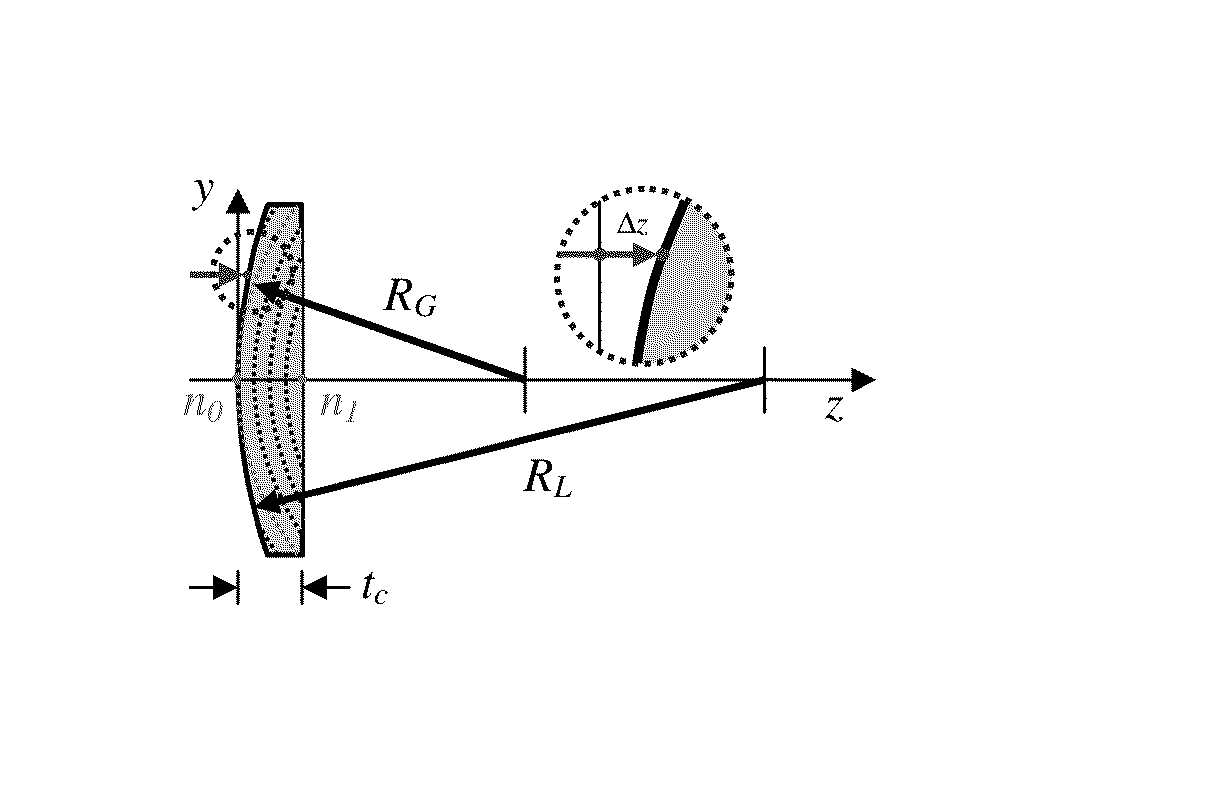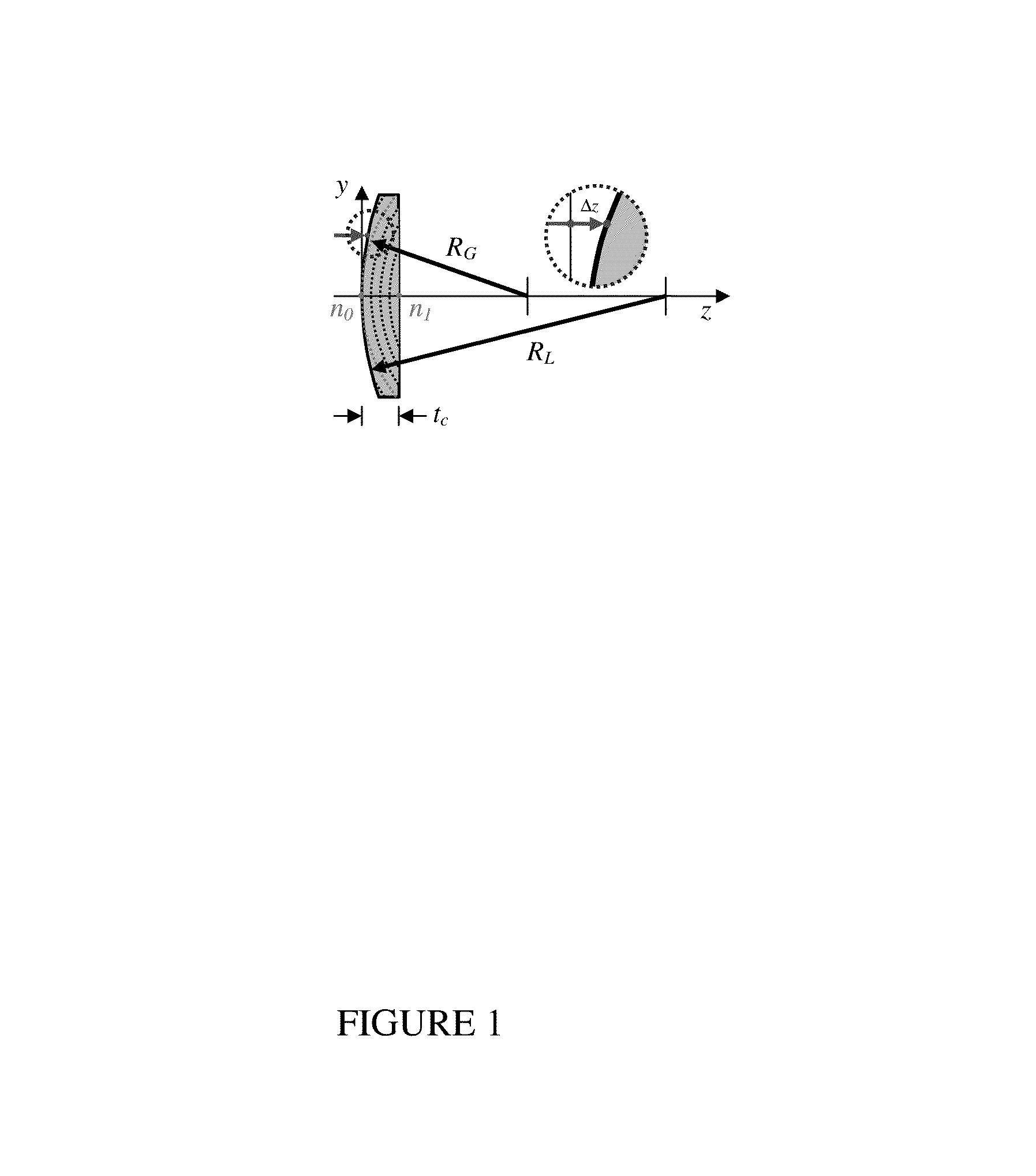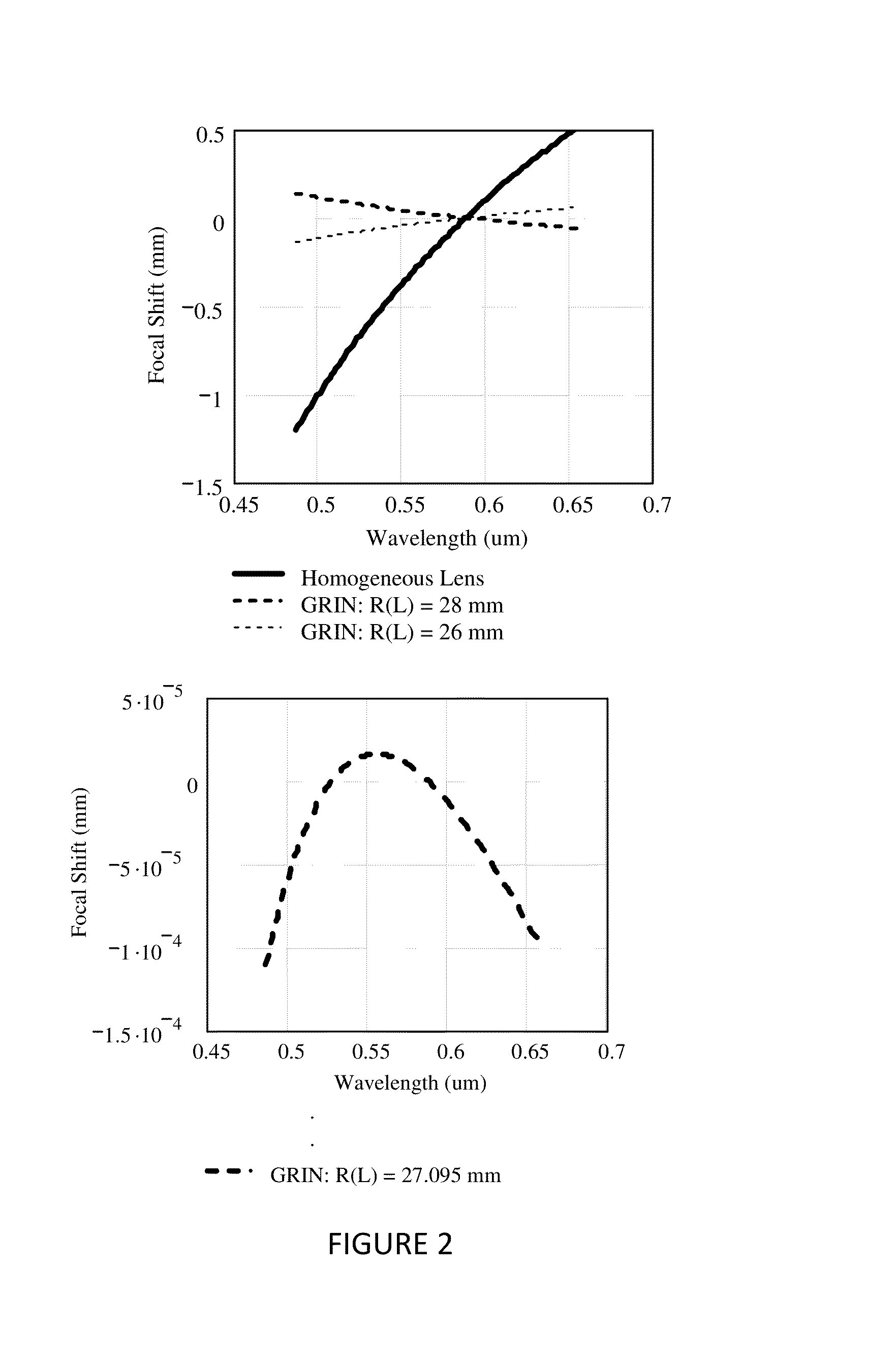Achromatic Gradient Index Singlet Lens
a gradient index and lens technology, applied in the field of optical lens design and manufacturing, can solve the problems of unsuitable imaging optics, lenses that focus light of different colors not equally, and achieve the effect of reducing the lens coun
- Summary
- Abstract
- Description
- Claims
- Application Information
AI Technical Summary
Benefits of technology
Problems solved by technology
Method used
Image
Examples
Embodiment Construction
[0017]The method disclosed employs gradient index materials—materials with a refractive index which is not constant within a lens substrate. While there are several ways to manufacture gradient index lenses, a NRL patent, U.S. Pat. No. 7,002,754B2, provides a technique of fabricating polymer-based gradient index lenses. In this technique, thin polymer films are first extruded from two base polymers. Since the weight fraction can be arbitrarily set during the extrusion process, the resultant thin films can have an index of refraction variably chosen anywhere between the indices of the base polymers. A large number of material production runs results in a “library” of thin plastic films with different refractive indices, inexpensively made and in large quantity. With a large set of thin films to choose from, finished optics can be assembled and molded in a variety of shapes.
[0018]The primary effect of gradient index, or GRIN, materials is that light does not follow a straight line wit...
PUM
| Property | Measurement | Unit |
|---|---|---|
| focal lengths | aaaaa | aaaaa |
| RG | aaaaa | aaaaa |
| distance | aaaaa | aaaaa |
Abstract
Description
Claims
Application Information
 Login to View More
Login to View More - R&D
- Intellectual Property
- Life Sciences
- Materials
- Tech Scout
- Unparalleled Data Quality
- Higher Quality Content
- 60% Fewer Hallucinations
Browse by: Latest US Patents, China's latest patents, Technical Efficacy Thesaurus, Application Domain, Technology Topic, Popular Technical Reports.
© 2025 PatSnap. All rights reserved.Legal|Privacy policy|Modern Slavery Act Transparency Statement|Sitemap|About US| Contact US: help@patsnap.com



